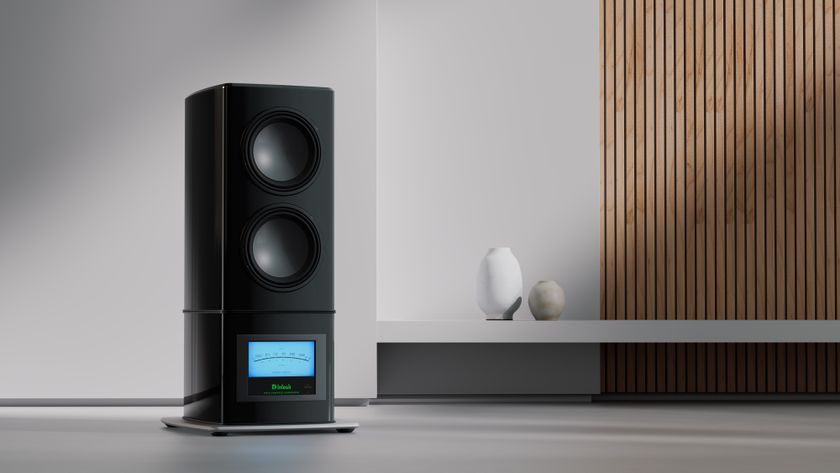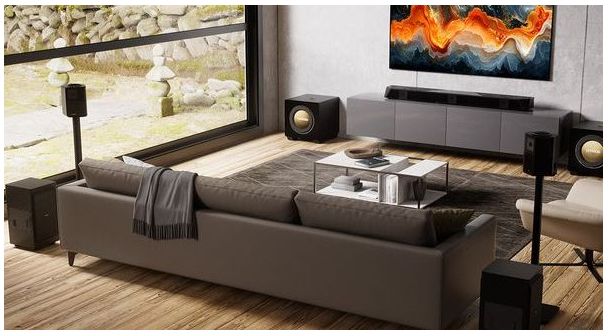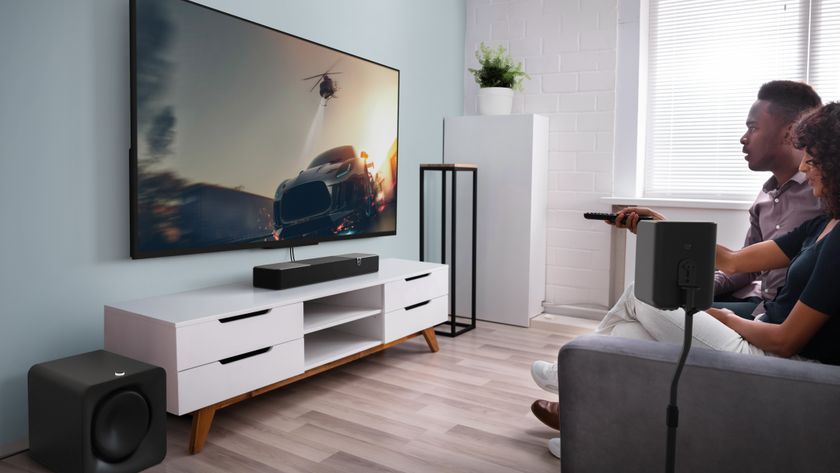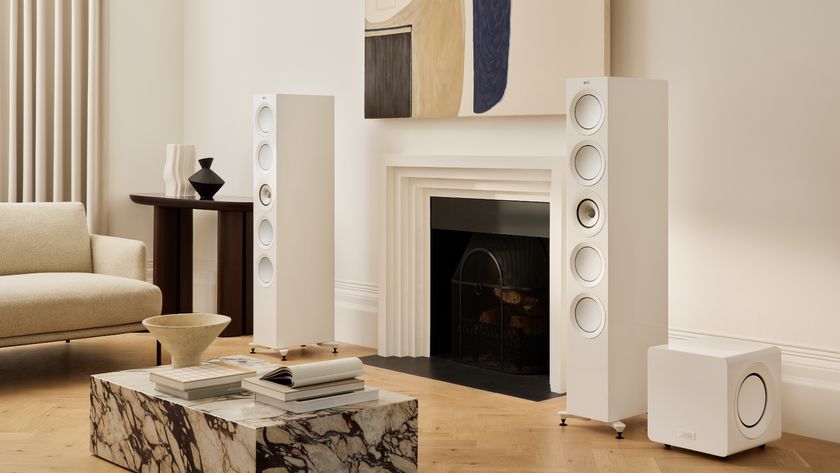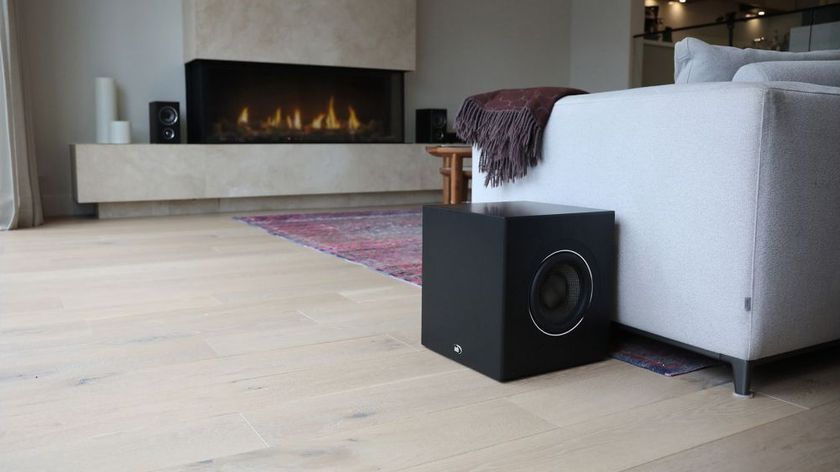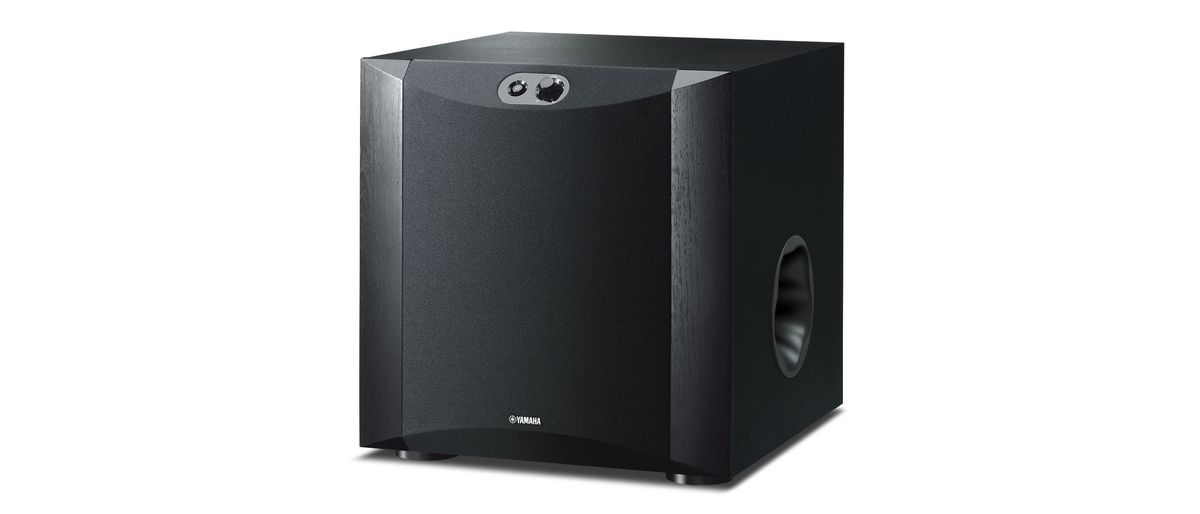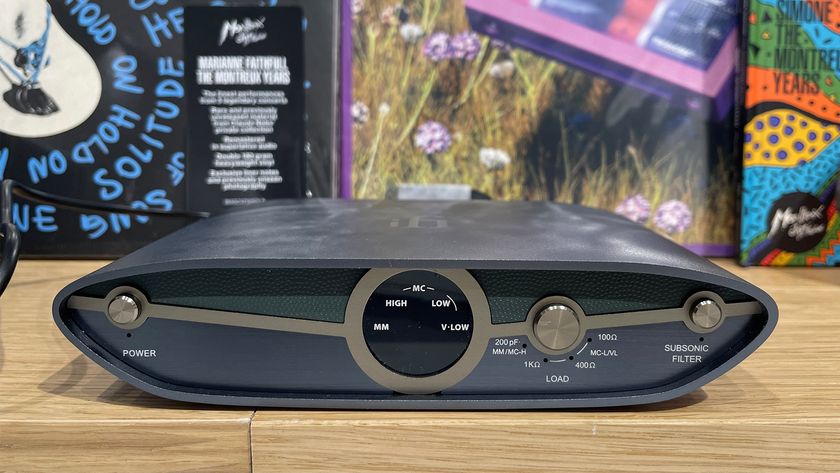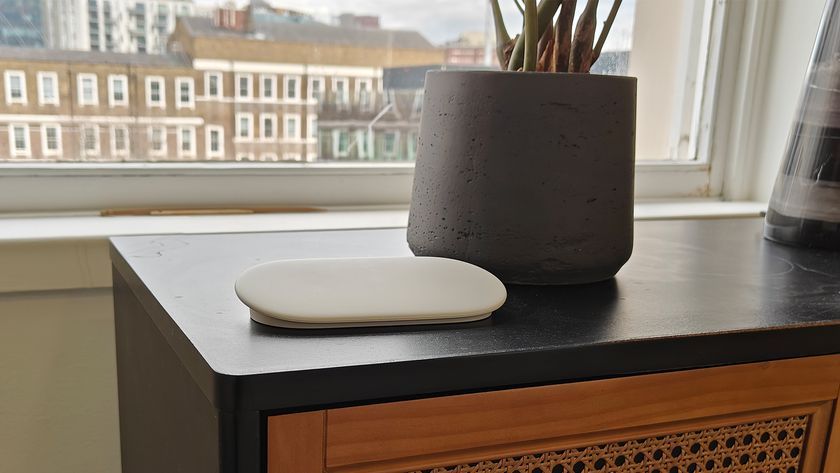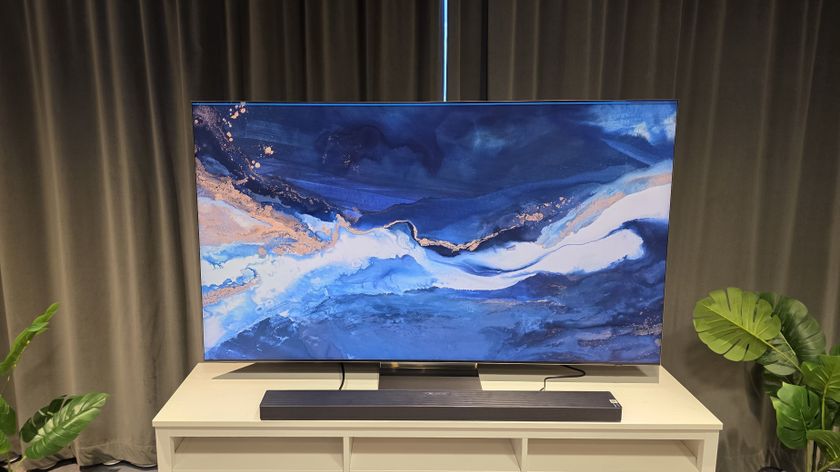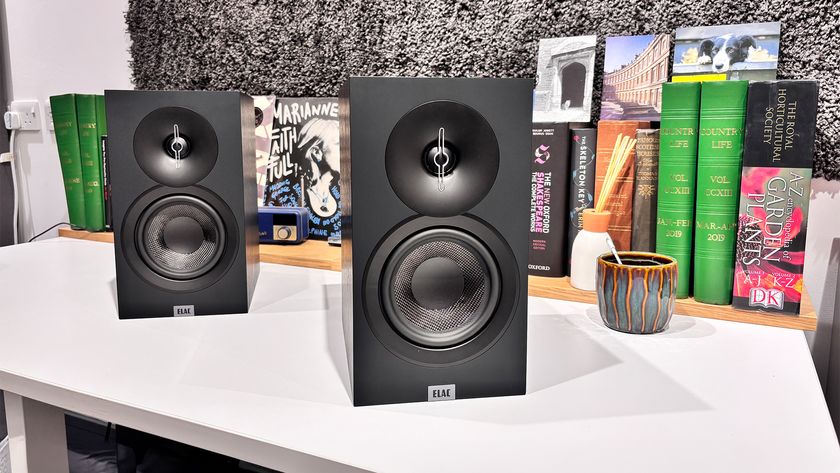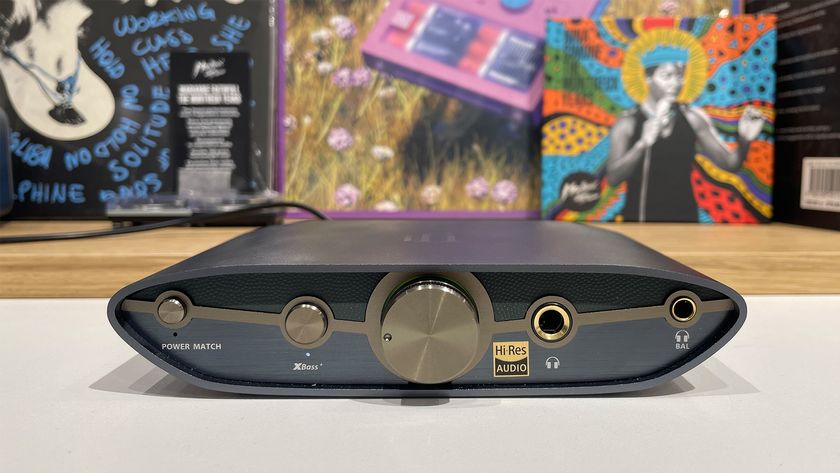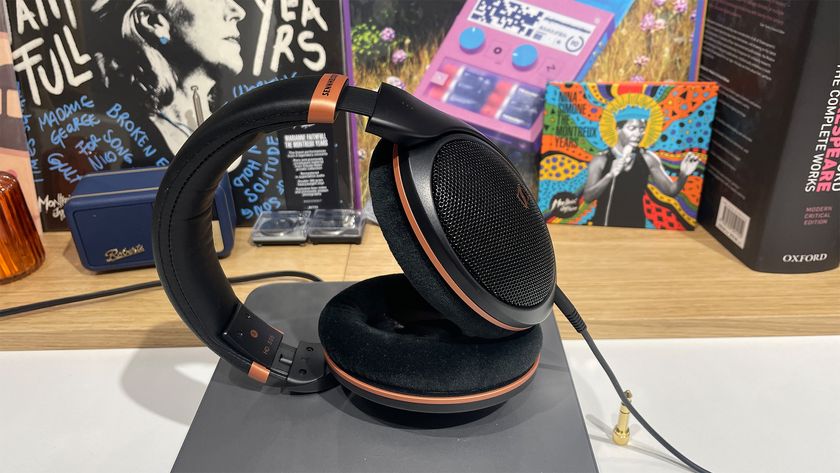What Hi-Fi? Verdict
Exemplary performance for a subwoofer of its size
Pros
- +
Great bass for size
- +
Front controls
- +
Multiple inputs
Cons
- -
Fixed 240V cable
Why you can trust What Hi-Fi?

This review and test originally appeared in Australian Hi-Fi magazine, one of What Hi-Fi?’s sister titles from Down Under. Click here for more information about Australian Hi-Fi, including details on how to subscribe.
I have a great deal of respect for Yamaha: both for the company and for its products. As a company, it’s hard to go past the fact that it recently celebrated its 50th anniversary, and is renowned the world over not only for the quality of its audio products, but also for the quality of its musical instruments… not to mention its motorcycles and outboard motors. So far as its products are concerned, well you don’t get to be a great company if you don’t have great products, and I can say at the outset that I have owned and enjoyed using Yamaha products across all four categories. One reason Yamaha has been so successful is its ability to embrace new technologies, no matter whether the result of in-house research and development at Yamaha, or embracing technologies developed in the USA or Sweden. The NS-SW300 that is the subject of this review is a good case in point, because it incorporates some unusual—and unusually useful—technological features.
First and foremost of these—to my mind—is the inclusion of Yamaha’s Active Servo circuitry… now in its third (I think) generation, being presented as ‘Advanced YST II’ where the YST stands for Yamaha Servo Technology. This isn’t a new technology, but it’s certainly a significant technology when it comes to subwoofer design (for reasons I will explain). A new technology, so far as I’m aware, incorporated in the NS-SW300 is the use of a ‘twister’ bass reflex port, which I’ll also explain.
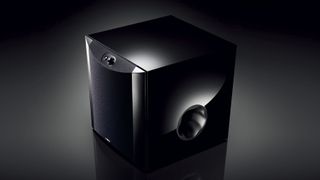
Equipment
The Yamaha NS-SW300 is quite a small subwoofer, measuring only 350×366×420mm. So if this subwoofer is so small, how come Yamaha claims the frequency response extends down to 20Hz, when conventional speaker design thinking has it that a subwoofer has to be physically large in order to deliver low bass frequencies?
The answer is that Yamaha is using a clever trick to extract more bass than one could reasonably expect from a subwoofer this size, and that ‘trick’ is the circuit I referenced in the introduction to this piece: Advanced YST II. Although the ‘Advanced YST II’ circuit in the NS-SW300 has benefitted from some recent circuit ‘tweaks’, the basic idea behind it is not new. Indeed YST’s evolution can be traced all the way back here to Australia and the work done in the ‘70s by the late, great Australian engineer Neville A. Thiele (who famously teamed up with US engineer Dr Richard Small to develop the ubiquitous Thiele/Small method of speaker alignment that is now used by every loudspeaker manufacturer in the world.)
Back in the 70s, Thiele wrote a paper entitled ‘Loudspeaker Circuit Stabilising Networks for Audio Amplifiers’ that contained some new and interesting theories about how an amplifier interacted with the speaker it was driving. Up until the publication of Thiele’s paper, both amplifier designers and speaker designers had operated under the premise that they were ‘stuck’ with having to deal with fixed sets of constants when designing their products. Amplifier designers, for example, had to assume that their amplifiers would be connected to speakers with an impedance of between 4Ω and 8Ω, for example. Thiele proposed a circuit that could ‘trick’ an amplifier into thinking it was connected to a loudspeaker with different electrical parameters than it actually had. This would then enable amplifier designers to do things they’d previously thought to be impossible.
Thiele’s paper inspired speaker and amplifier designers around the world to realise the impossible and develop such circuits, and one such designer was Katsuo Nagi in Japan, who named his circuit ‘AST’ (Active Servo Technology) and assigned his patent to Yamaha, which marketed it as ‘AST’ when it was used in its full-range speaker designs and ‘YST’ when it was used in its subwoofers. (A young Swedish electronics designer, Erik Stahl, also developed a version of the circuit, but he opted for the descriptor ‘ACE-Bass’.)
To understand how YST works, you need to understand that the difficulty of extracting deep bass from a conventional dynamic driver is that they all have a fundamental resonance frequency below which their output falls off very quickly (at 12dB per octave when the driver is mounted in a closed box and at 18dB per octave when the driver is mounted in a vented enclosure, as here). This means that the drivers will deliver bass fairly readily down to this frequency (usually around 30–40Hz) after which the bass essentially ‘disappears.’ By using a ‘negative’ output impedance it is possible to eliminate the various ‘flow-on’ effects that usually result from an amplifier being connected to the resistance of the loudspeaker’s voice-coil, the practical result of which is a subwoofer with 90 per cent less cabinet volume than a conventional bass reflex subwoofer while still maintaining similar bass output characteristics. In other words: ‘bigger bass from a smaller box.’
As you’ve probably guessed from the photograph accompanying this review the Yamaha NS-SW300 has many more controls than the volume control and power switch that are visible on the front panel. Look around the back and you’ll find a mains power switch (the one on the front is actually a standby power switch), a three-position automatic standby slider switch (Off/Low/High), a two-position phase slider switch (Normal/Reverse), a rotary high-cut control (40–140Hz) and a two-position B.A.S.S. slider switch (Music/Movies). B.A.S.S. is a manufactured acronym that stands for ‘Bass Action Selector System’: it’s really just an equaliser that lets you choose between two different EQ settings, depending on whether you’re watching a movie or listening to music.
Also on the back panel are gold-plated RCA phono inputs for line-level inputs, with the left-channel input being the one to use if you have only a single subwoofer output on your amplifier or AV receiver, plus a gold-plated LFE phono input which you’d use if your AV receiver has an LFE output. There’s also a set of high-level inputs and output terminals (multi-way banana types) for those who prefer (or by design are forced) to connect their subwoofer to their speaker terminals. Finally, there’s a ‘System Connector’ that…
The extensive ‘finning’ on the rear panel suggested to me that Yamaha was using a conventional Class AB amplifier inside the NS-SW300, rather than a Class-D switch-mode amplifier, but according to Yamaha’s specifications, it is using a Class-D (PWM) amplifier, which the company rates as possessing a power output of 250-watts. This drives a front-firing 250mm diameter woofer—though because this woofer is located underneath a protective grille that I could not remove, I was unable to independently confirm its dimensions… in particular its Theile/Small diameter. This driver’s voice-coil is unusual because rather than using wire with a circular cross-section, the wire has a square cross-section. This is a well-known but rarely used method of putting more conductive material into the magnetic field, which has the effect of increasing the driver’s efficiency.
Another device that increases efficiency is a bass reflex port and, as I noted in the introduction to this review, the NS-SW300 has one of these… but it’s a strange one. Instead of having a smooth surface, there’s a ‘whirl’ moulded into it that looks exactly like a reversed-out version of the ice-cream at the top of a Mr Whippy cone. According to Yamaha’s website (on which you can see a video on the topic), ‘The flared, gently twisting shape diffuses the vortex of air generated around the edge of the port, creating a smooth flow of air. This reduces extraneous noise not present in the original input signal and provides clear, accurate low frequency reproduction.’ The idea, of course, is to reduce so-called ‘port noise’ which has plagued bass reflex enclosures for many years. Other manufacturers have come up with alternative designs to provide the same solution, one of the best-known of which is British manufacturer Bowers & Wilkins, covers the inside surfaces of its ports with dimples, not unlike a golf ball. Me? I personally think Yamaha’s ‘twister port’ looks cooler than B&W’s ‘flow port’.
As for the external cabinet, photographs don’t really do it justice, but it’s an outstandingly good black piano-gloss finish—and you don’t need me to tell you that Yamaha knows more than a little about piano-gloss finishes! It’s always in the eye of the beholder, of course, but I found the NS-SW300 made for a very handsome item of furniture in my listening room… and my wife agreed, while also commenting that it was ‘sensibly smaller’ than the subwoofer that normally occupies that territory in the room! My only tiny complaint about the NS-SW300 is that its 240V mains cable is black, and fixed to the subwoofer, so you can’t replace it. Since my carpet is white, if the cord had been removable, I could have replaced it with a white-coloured 240V cable, which would have been less visible.
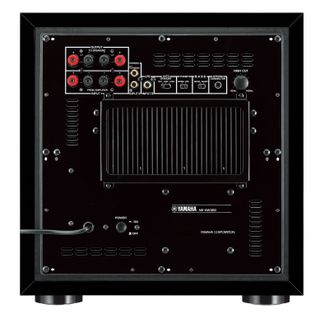
Listening sessions
If you have never owned a subwoofer previously, be warned that you will initially need to spend a considerable amount of time working out where in your room the NS-SW300 has to be placed in order to ensure it will deliver the deepest, most even sound. The process is quite lengthy, so you’ll find a description here: http://www.avhub.com.au/features/hi-fi/subwoofer-placement-394396
(The good news is that once you’ve found the best spot, that same spot will be the best for any subwoofer, so it’s a process you’ll only do the once, even if you decide to upgrade to a larger subwoofer at some time in the future… or add a second subwoofer.) In the room I was using, the best spot is actually a corner that’s a fair distance from my TV screen, but only a bit further to the right than my right-channel speaker. This position put the bass reflex port (which is on the right hand side of the subwoofer) fairly close to a stub wall on the right, but it didn’t seem to make any difference to the sound.
What decidedly did make a considerable difference to the sound was the position of the B.A.S.S. slider switch. I greatly preferred the sound of the SW300 when it was set to ‘Movie’, irrespective of whether I was using it with a movie soundtrack or listening to two-channel music, so I just left it in the same position throughout the whole time I was listening to the NS-SW300 in order to write this review.
Another setting that will make a very audible difference to the sound you’re hearing is where you set the high-cut control (note that although Yamaha calls it a ‘high-cut’ control, which is technically accurate, most audiophiles—along with many subwoofer manufacturers—call it a ‘crossover’ control). But whatever you choose to call it, my ears very definitely told me that the NS-SW300 sounded the most dynamic and the bass the deepest when I set the high-cut control to 40Hz. In this setting, bass transitioned to the three pairs of main speakers I had on hand quite nicely, with no ‘hole in the middle’ that I could hear. However, if you have very small main speakers, you may have to set a higher high-cut frequency to avoid a ‘hole in the middle’ (that is, where the subwoofer’s high-frequency response is rolling off before the low-frequency response of the bookshelf speakers starts kicking in). Be aware, however, that the higher the setting of the high-cut control, the less loudly you’ll be able to play the NS-SW300 before distortion starts setting in. However from my experience with the NS-SW300, I think you’ll be able to play it plenty loud enough—even with the high-cut control set to maximum—in any average-sized room.
So long as you’re not a fan of the pipe organ, you will find bass extension a-plenty, with the low strings of both bass guitars and double-basses being reproduced accurately and tightly, with very little ‘bloom’. Bass timing was very precise, and the speed of the bass such that I couldn’t hear any lag at all. Tonality was excellent with the crossover set close to 40Hz, with an ever-so-slight ‘plumminess’ creeping in only at higher crossover settings… and then only when volume levels were also set too high.
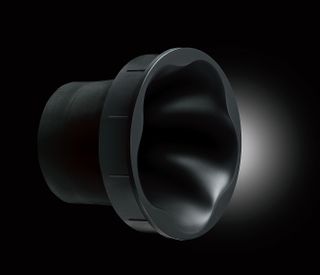
Verdict
In the world of subwoofing, the performance of any individual subwoofer will be dictated by the diameter and quality of the bass driver fitted to it, the volume of the cabinet in which it’s fitted, the power output of the amplifier driving the bass driver, and the presence (or absence) of any sophisticated electronic circuitry fitted to enhance the subwoofer’s performance (YST, DSP et al). Of course all of the foregoing will affect the manufacturing costs, and therefore the final retail price.
Laboratory test report
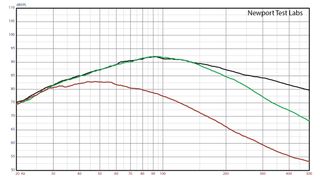
Newport Test Labs measured the frequency response of the Yamaha NS-SW300 subwoofer at a distance of two metres, using a pink noise stimulus. Figure 1 shows the resulting responses after they’d been smoothed via third-octave filtering. You can see that the LFE input of the SW300 bypasses the subwoofer’s inbuilt high-cut filter, so if you use the LFE input, you will need to do any filtering using your AV receiver’s crossover circuitry. You can see that for both the LFE input and the 140Hz setting of the Yamaha’s high-cut control, the NS-SW300’s output peaks at 90Hz, rolling off shallowly above this via the LFE input (black trace) and a little faster for the 140Hz setting (green trace). The overall frequency response for the 140Hz setting is about 45Hz to 180Hz ±3dB, which is an excellent result. The black trace shows the frequency response of the NS-SW300 when the high-cut is set to 40Hz, and with this setting of the control, the subwoofer’s frequency response was measured as 23Hz to 120Hz ±3dB. In this setting, the subwoofer’s output peaks at around 50Hz. Perhaps more importantly, the frequency response is very linear at this setting, extending from 30Hz to 80Hz ±1.2dB. Overall, the Yamaha NS-SW300 shows exemplary performance for a subwoofer of its size.
Australian Hi-Fi is one of What Hi-Fi?’s sister titles from Down Under and Australia’s longest-running and most successful hi-fi magazines, having been in continuous publication since 1969. Now edited by What Hi-Fi?'s Becky Roberts, every issue is packed with authoritative reviews of hi-fi equipment ranging from portables to state-of-the-art audiophile systems (and everything in between), information on new product launches, and ‘how-to’ articles to help you get the best quality sound for your home. Click here for more information about Australian Hi-Fi, including links to buy individual digital editions and details on how best to subscribe.

